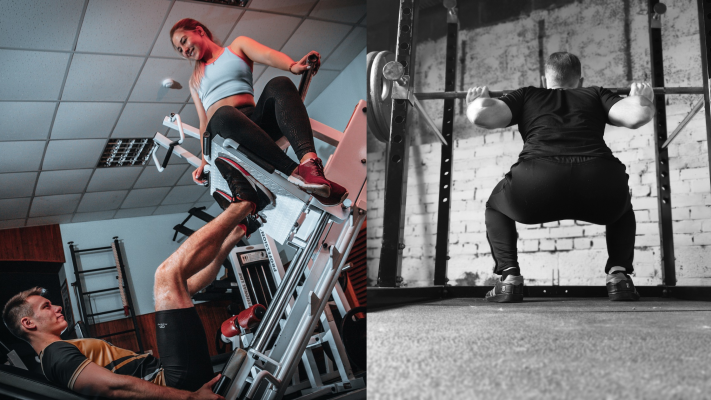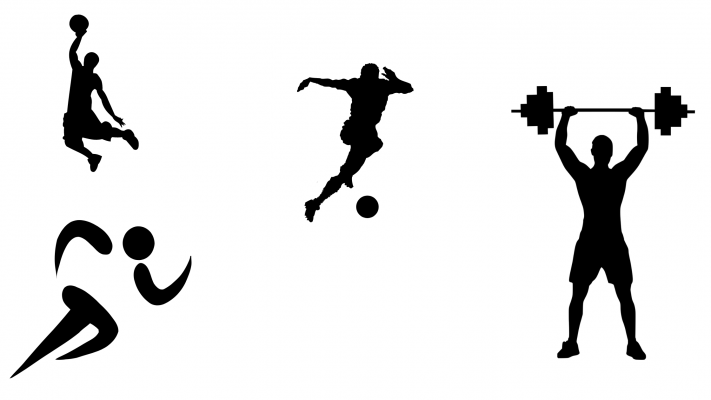Exercise selection is a debated topic in the fitness community, with some individuals advocating for isolation exercises and others focusing on compound movements like squats, pull-ups, and deadlifts. It is important to consider the context of a person’s situation when determining the best approach to exercise, as what may work for one person may not necessarily be suitable for another.
Key points to consider when determining the best approach to exercise selection:
- Training frequency: How many days per week can you commit to training?
- Personal goals: What are your specific goals for your fitness routine (e.g., muscle building, fat loss, general health)?
- Equipment availability: What equipment is available at the gym you will be training at?
- Daily schedule: How busy is your daily routine? Do you have time for longer workouts or do you need to prioritize efficiency?
- Sleep quality: Are you getting enough sleep? Lack of sleep can affect your ability to recover from workouts.
- Diet: Is your diet supporting your fitness goals and overall health?
- Training level: Are you a beginner, intermediate, or advanced exerciser? This can affect your ability to perform certain exercises.
- Injuries or physical limitations: Do you have any injuries or physical limitations that may affect your exercise choices?
- To determine the most appropriate exercise plan, it is important to consider all these factors and individualize the approach to best meet a person’s needs and goals.
You can come up with the most brilliant workout split that requires 6 workouts per week, but if you only have time for 4 workouts, it’s obviously not the best choice.
There are excellent programs that require you to do squats 4 times a week, but if your gym doesn’t have a squat rack?
Actually, things are even more complicated. Imagine you’re preparing for a men’s physique competition, but at the same time you’re working a very stressful job, sleeping an average of 6 hours a night, and can only train a maximum of 4 times a week for 40 minutes.
Squats and deadlifts are some of my favourite exercises, but with limited training time, terrible recovery, and no participation of these exercises in the male physique criteria, they are not a good choice.
It makes much more sense to limit the work volume to the most important muscles in the category – arms, chest, traps and back – and add a few isolation exercises for the legs.
Which should I choose – squat or leg press?
It’s no coincidence that compound exercises such as squats, deadlifts, shoulder presses, pull-ups, and bench press are found in a lot of training programs. There are many reasons for this, with most people focusing on the load that can be lifted.
But beyond that, compound exercises:
- They create a more mechanistic load
- Often have a better resistance curve relative to the strength curve of the muscle
- Put more muscles through a greater range of motion
- Are often closed kinetic chain and have better load distribution
There are no two opinions that basic exercises should be the foundation of most training programs. But on the other hand, they cause greater neurological and muscular fatigue in both the short and long term.
The deadlift is an excellent example.
Few people can deadlift at 90% of their max 3-4 times a week without a burnout after a month.
When we fill the entire training volume with only compound exercises, we need more time for recovery. If the goal is absolute strength, this might not be such a problem, as usually programs that are designed with this goal in mind include larger rest periods and predetermined recovery weeks.
But in the context of bodybuilding, where the goal is aesthetic, isolation exercises are a necessary evil. It is extremely unnecessary to add training volume to the biceps with more pull-ups.
On the other hand, isolation exercises also have definite advantages:
Unilateral variations can correct strength/vision imbalances
Allow for the addition of training volume without serious fatigue
Can sometimes allow a better resistance curve relative to the strength curve of the muscle
In practice, almost all training programs are some combination of compound and isolation exercises. The question is what is the optimal balance?
The answer is specific to your goals and the context of your situation.
In general, it all depends on four things:
Your goals:
Principle of specificity
The principle of specificities states that the best way to improve a particular aspect of physical performance is to train specifically for that aspect. This means that if you want to improve your endurance, you should focus on endurance training rather than strength training or speed training. Similarly, if you want to improve your strength, you should focus on strength training rather than endurance training or speed training.
The principle of specificities is based on the idea that the body adapts to the specific demands placed on it. When you engage in a particular type of physical activity, your body will undergo specific physiological and structural adaptations in response to the demands of that activity. For example, if you engage in endurance training, your body will adapt by increasing the number and size of mitochondria in your muscles, which allows your muscles to use oxygen more efficiently and produce energy for longer periods of time. On the other hand, if you engage in strength training, your body will adapt by increasing the size and strength of your muscles through a process called muscle hypertrophy.
The principle of specificities is important for athletes and trainers to consider when designing training programs, as it helps to ensure that the training is tailored to the specific goals and needs of the athlete. By training specifically for a particular aspect of performance, athletes can optimize their training and achieve the best possible results.
But it’s not just the sport that matters. For the average person, personal goals are even more important!
For example, if you have to design a workout program for a middle-aged woman who just wants to feel better, it’s hardly a good idea to kill her with squats and deadlifts. Imagine that, besides that, she doesn’t have a good motor culture, the time or the desire to learn technical exercises.
In that case, there are excellent alternatives to exercises like squats and deadlifts – all sorts of unilateral squats and lunges, Romanian deadlifts with a bar or dumbbell, hip thrusts, hyperextensions, etc.
When the end goal is to lose a few pounds and build some muscle mass, this is a much easier, enjoyable, and affordable way to achieve goals.
No one argues that multi-joint movements are better, but in this case more isolation exercises are optimal!
Your recovery
If for some reason you don’t get enough rest, it’s certainly not a good idea to make your workout consist entirely of compound exercises.
The reason is that you’ll constantly overload yourself more than you can recover from, and the accumulated fatigue will start to hold you back.
An excellent example of this is the so-called German Volume Training (GVT from here on). This training method is based on the magic number 10. If you follow it, you should perform 10 sets of 10 repetitions of each exercise.
As extreme as it sounds, 10×10 is one of the most popular programs and many people get into it thinking that more = better.
A very fresh study from 2017 illustrates this perfectly. Here, 19 young people were split into two groups. One trained the traditional GVT protocol with 10 sets of 10 reps. The other performed only 5 sets of 10 reps. The results are entirely in favor of the group that only does 5 sets.
Many people also don’t suspect how serious the influence of other factors in their daily life is, such as:
The quality and quantity of their sleep: In practice, this is the most important thing for your recovery and overall well-being.
Stress: one of the things we don’t have complete control. If you work in a fast-paced work environment with multiple deadlines, you’re probably under serious stress. In turn, this greatly extends the recovery time for your muscles and nervous system!
Diet: it’s worth negotiating this too. To recover well you need to take in enough protein, fibre and calories, not eat randomly and we should consume enough vegetables and fruit.
Training frequency
The more you progress in a sport or activity, the more time you need to put into it. Especially when we’re talking about sports, this means you need to increase your training frequency!
Almost all professional athletes train several times a day. In practice, their job is to eat enough and exercise.
Bodybuilding and strength sports are no different. The more you progress in your training career, the greater your workload capacity.
Accordingly, we need to add more weight, reps and sets to progress!
In general, most people train between 3 and 6 times per week. If you train 3 times a week, it is entirely possible, and in fact advisable, to focus on 3 compound exercises and 2-3 isolation exercises.
In case you train 6 times a week, it is better to limit the number of base exercises to 1-2 and focus on 3-4 isolation exercises.
This way you won’t overload your nervous system and muscles to the point that you can’t recover.
Our training level ( The degree of advancement)
Often the people who workout determine their progress by their time in the gym. For example, if you’ve been working out for 3 months, you’re a beginner, but when you hit a year and a half and two years in the gym, you’re already advanced!
This could not be further from the truth.
The time you spend in the gym is not a good indicator of your progress.
The reason is that most of the people waste their time and have no idea what they are doing.
What matters is the strength indicators. They are a measure of the amount of adaptation you have produced over the course of training!
There are several sites you can use to see how you perform relative to other people of similar weight, gender and age.
One of them is strengthlevel.com. It uses the following scale for training level – untrained, novice, intermediate, advanced, elite.
How to apply all this information?
As I said at the outset, all this information is meaningless unless we put it in the right context.
In fact, the article was prompted by a question we received on our PirateTea community. It’s not the first time we’ve been asked something like this, and the topic is very interesting, so I thought it would make for useful reading.
The question is whether it is possible to do squats, lunges and deadlifts every day, but with more reps, if our goal is bodybuilding/aesthetics?
Unless we’re talking about some elite athlete gifted with amazing genes, the answer is no. Few people have the work capacity and recovery to do those 3 exercises 5 times a week and progress consistently.
Sure, the guy expressed himself that way, but that’s not exactly what he meant. What he meant to ask was if he could rely on a larger number of compound exercises instead of performing a huge number of isolation exercises.
Before I can give an answer, I must make a few assumptions:
- He has an excellent recovery – low stress levels, gets good sleep, eats well
- Can train between 3 and 5 times per week, no preference if results are there
- His level – intermediate
| Workout A – Monday | Workout B – Wednesday | Workout C – Friday |
| Squat – strength 5×5 Bench press – hypertrophy 3×8 Deadlift – speed 7×2 Pull ups Isolation isolation
| Bench press – strength 5×5 Deadlift – hypertrophy 3×8 Squat – speed 7×2 Push ups Isolation Isolation | Deadlift – strength 3×5 Squat – hypertrophy 3×8 Bench press – speed 7×2 Shoulder press Isolation Isolation
|
With four workouts a week, I’d definitely go with an upper/lower split that would look something like this:
| Workout A – Upper | Workout B – Lower | Workout C – Upper | Workout D – Lower |
| Bench Press – 4×8 hypertrophy Pull – ups Dumbbell bench press Isolation Isolation Isolation Isolation
| Squat – 5×5 Deadlift – 4×8 Lunges/Bg squat Isolation Isolation Isolation | Bench press – strength – 3×5 with RPE 8.5 Shoulder press Pull – ups Isolation Isolation Isolation Isolation | Deadlift – 5×5 with RPE 8.5 Squat 4×8 Romanian deadlift Isolation Isolation Isolation |
With five or more workouts per week, I would do a high frequency split with 3 workout days. This is a very simplified option, and I would also play around with 4 sets of all compound exercises here, if good recovery is available.
| Workout A | Workout B | Workout C |
| Squat 3×8 Shoulder press with dumbbell Isolation/pull – ups Isolation Isolation Isolation
| Shoulder press 3×8 Pull – ups 3×8 Isolation/hip thrust Isolation Isolation Isolation | Deadlift 3×5/Romanian deadlift 3×8 Bench press 3×8 Isolation Isolation Isolation Isolation |
Note that here the deadlift can be replaced entirely by a Romanian one. If the goal is 6 workouts per week, the deadlift may be too heavy for recovery, in which case I would personally recommend a heavy Romanian deadlift.
Compound or isolation exercises
No one could deny that basic exercises are the best foundation of any training program. But isolation movements have an unfairly bad reputation among some gym – lovers.
My personal opinion is that it’s important to have a balance between the two. Like anything else, both types of exercise have advantages and disadvantages. If you combine them wisely, you can reap the benefits of both while reducing the negatives!
Getting the combination right is an art that you need to master throughout your training career, discovering what works for you.
The main things to watch out for are:
- Your recovery ability
- Your level of progression
- Your goals
I hope the private case at the end of this article has been helpful to a lot of you! Keep asking us interesting questions and who knows, maybe your question will find a place in our next article!








